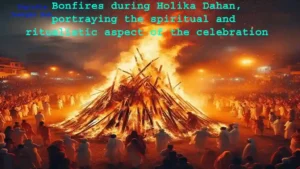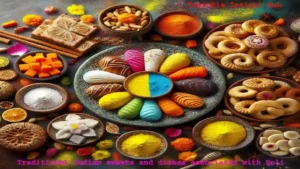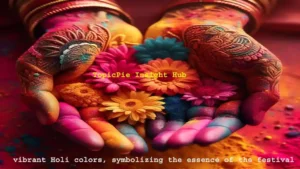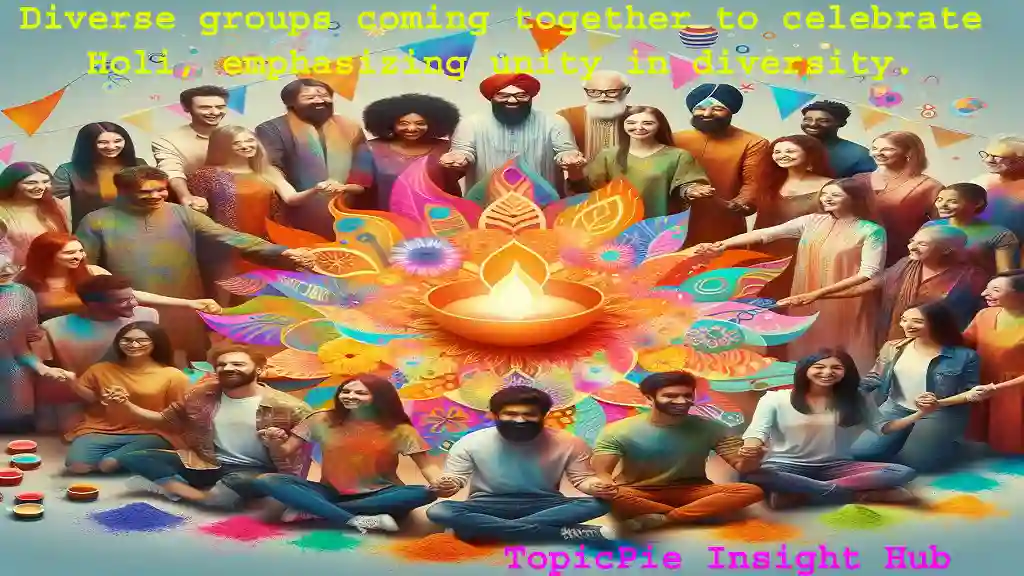Welcome to the vibrant celebration of the festival of colours in India! This joyous occasion is a kaleidoscope of hues, laughter, and merriment, creating a dazzling spectacle that captures the hearts of millions. Uniting people from different walks of life, this festival embodies the spirit of togetherness, spreading love and happiness in every corner of the country.
Steeped in rich cultural heritage, the festival of colours holds a special place in the hearts of Indians. With its origins deeply rooted in mythology and ancient traditions, this vibrant celebration showcases the essence of Indian culture. It symbolizes unity, harmony, and the triumph of good over evil, making it a truly unique and cherished experience.
From the playful throwing of colored powders and the gentle splash of water to the sounds of music and dance, the festival of colours is a sensory extravaganza that ignites the soul. It brings people together, transcending barriers and fostering a sense of belonging that is unparalleled. Whether you’re a participant or an observer, this celebration promises a truly unforgettable experience.
In this article, we will delve into the history, cultural significance, legends, rituals, and traditions associated with the festival of colours in India. We will take you on a virtual tour of popular Holi celebrations across different regions, providing tips for a safe and enjoyable experience. Additionally, we will tantalize your taste buds with a glimpse into the delectable traditional Indian cuisine and share photography tips to capture the vibrancy of the festivities.
Join us on this exciting journey as we celebrate the festival of colours and unravel the magic, joy, and camaraderie that makes it one of India’s most cherished cultural traditions.
Key Takeaways:
- The festival of colours in India is a vibrant and joyous celebration
- It holds cultural and mythological significance
- Participants enjoy throwing colored powders and splashing water
- Holi celebrations are a symbol of unity and harmony in Indian society
- Traditional Indian cuisine and photography are integral parts of the festival
History and Origins of the Festival of Colours:
The festival of colours, widely known as Holi, is an ancient Indian celebration with a rich history and fascinating origins. This vibrant festival holds deep cultural significance and is rooted in centuries-old traditions.
In Hindu mythology, the festival’s origins can be traced back to various legends and stories. One popular legend revolves around the mischievous antics of Lord Krishna, a Hindu deity renowned for his playful nature. According to the legend, Lord Krishna felt self-conscious about the stark difference in skin color between himself and his beloved Radha. In a mischievous attempt to bridge the gap, Lord Krishna playfully applied vibrant colors on Radha’s face. This playful act became the foundation of the festival, symbolizing love, joy, and the unifying power of colors.
“Holi is the time to express affection openly. The beautiful colors represent love and unity.”
Beyond its mythological origins, Holi has historical significance as well. The festival traces its roots to ancient agricultural practices, where people celebrated the arrival of spring and the harvest season. Holi served as a way to bid farewell to winter and welcome the new season of growth and abundance.
Over the centuries, Holi has evolved and gained prominence as one of the most exuberant festivals in India, celebrated by people of all ages and backgrounds. It has transcended religious boundaries and is now a symbol of joy, togetherness, and the triumph of good over evil.
The Evolution of Holi

In its early days, Holi was primarily celebrated in North India, with regions like Braj, Mathura, and Vrindavan being the epicenters of lavish festivities. The region’s association with Lord Krishna further added to the festival’s cultural significance.
As time passed, Holi spread its vibrant colors across India and even globally, with Indian diaspora communities celebrating the festival in different parts of the world. Today, Holi has become a global phenomenon, attracting people from diverse cultures to partake in its exuberant celebrations.
Exploring Traditional Holi Celebrations
Various regions in India have unique customs and traditions associated with Holi, adding to the festival’s diverse tapestry. Here’s an overview of some traditional Holi celebrations:
- Braj Ki Holi: This region, known for its association with Lord Krishna, celebrates Holi with utmost fervor. The festivities include lively processions, reenactments of Krishna’s playfulness, and the famous “Lathmar Holi” where women playfully hit men with sticks.
- Purulia Holi: In the rural hinterlands of West Bengal, Purulia Holi features vibrant folk performances, traditional songs, and mesmerizing dance forms like Chau and Natua.
- Shantiniketan Holi: This unique celebration was popularized by the renowned Indian poet and Nobel Laureate, Rabindranath Tagore. It combines the joyous spirit of Holi with Tagore’s cultural ethos, showcasing colorful processions, recitals of his poetry, and soul-stirring cultural performances.
- South Indian Holi: While Holi is not predominantly celebrated in South India, certain regions like Tamil Nadu and Karnataka have their own versions of the festival. In Tamil Nadu, people celebrate Holi as “Kaman Pandigai,” paying tribute to the love god, Kamadeva, and his legendary sacrifice.
These are just a few examples, representing the vast tapestry of traditional Holi celebrations across India. Each region brings its own unique flavor, customs, and rituals to the festivities, making Holi a truly diverse and captivating celebration.
A Glimpse Into History
| Year | Historical Event |
|---|---|
| 13th century | The reign of the Chandel dynasty introduced the festival of Holi in the region of Bundelkhand, which is now a part of central India. |
| 16th century | India witnessed the rise of Mughal Empire, and with it came the influence of Persian and Islamic cultures. Holi celebrations were adapted to include customs like the “Holika Dahan” bonfire and the exchange of sweet delicacies. |
| 17th century | The famous Indian poet, Surdas, wrote extensively about the playful interactions of Radha and Krishna during Holi, further romanticizing the festival and embedding it in cultural lore. |
| 19th century | Holi gained popularity during the British colonial era, with the British witnessing and describing the exuberant celebrations. Holi became an integral part of India’s cultural fabric, transcending religious and social barriers. |
The festival of colours, with its rich historical background and cultural significance, continues to bring communities together, forging bonds of love and happiness. Understanding its origins gives us a deeper appreciation for the joyful traditions that make Holi a cherished festival in India and around the world.
Cultural Significance of the Festival of Colours
The festival of colours, also known as Holi, holds immense cultural significance in India. This vibrant celebration brings people from all walks of life together, symbolizing unity, harmony, and the triumph of good over evil according to Indian mythology.
“Holi, the festival of colours, is a time when people come together to forget their differences and celebrate the beauty of diversity,” says Dr. Rakesh Sharma, a cultural anthropologist at the University of Delhi. “It signifies the breaking down of barriers and the creation of an inclusive community.”
The cultural importance of Holi can be traced back to ancient Hindu mythology, particularly the legend of Lord Krishna. According to the myth, Lord Krishna, a Hindu deity, was known for his mischievous nature and love for playing with colours. He would often drench his companions, friends, and lover Radha in vibrant hues, making Holi a joyful and playful event.
This cultural significance of Holi is also reflected in the symbolic rituals and traditions associated with the festival. One of the key rituals is the lighting of a bonfire on the eve of Holi, known as Holika Dahan, which symbolizes the victory of good over evil. People gather around the bonfire, sing devotional songs, and offer prayers, reinforcing the message of spiritual cleansing and renewal.
Also Read: The Power and Presence of the Supreme Soul in Everyday Life
Another integral part of Holi is the playful throwing of colours and water. This colorful melee represents the breaking down of social barriers, as people from all walks of life come together to celebrate and embrace each other’s differences. It promotes a sense of inclusivity, equality, and togetherness, fostering a spirit of harmony and goodwill among communities.
The festival of colours also holds a special place in the hearts of artists and performers in India. Traditional folk dances, music, and theatrical performances are an integral part of Holi celebrations. These artistic expressions not only entertain the audience but also provide a platform for cultural exchange and preservation.
The festival of colours, Holi, is steeped in cultural significance for the people of India. It represents unity, harmony, and the triumph of good over evil. Through its vibrant celebrations and rich traditions, Holi brings communities closer and fosters a sense of inclusivity and joy.
Legends and Mythological Stories Associated with the Festival of Colours:
The festival of colours in India is steeped in rich legends and mythological stories that have shaped its traditions and rituals. These stories add a deeper significance to the celebration, connecting it to ancient times and bringing people together in a shared cultural experience.
One of the most popular mythological stories associated with the festival is the legend of Prahlada and Holika. According to Hindu mythology, Prahlada was a devotee of Lord Vishnu, while his father, King Hiranyakashipu, despised the deity. In an attempt to kill Prahlada, the king’s sister, Holika, who had a boon to be immune to fire, sat with Prahlada on a pyre. Surprisingly, the fire burned Holika, but Prahlada emerged unscathed, symbolizing the triumph of good over evil, reenacted with bonfires and burning effigies during the festival.
Another well-known mythological story associated with the festival is the tale of Lord Krishna and Radha. It is believed that Lord Krishna, known for his mischievous nature, once complained to his mother about Radha’s fair complexion compared to his dark skin. In response, his mother playfully suggested that he can change Radha’s complexion by applying coloured powders on her face. This playful act of Krishna and Radha is said to have laid the foundation for the tradition of throwing colours during the festival.
These legends and mythological stories add depth and meaning to the festival of colours, connecting present-day celebrations to ancient traditions and beliefs. They serve as a reminder of the triumph of good over evil, the power of love, and the spirit of unity that the festival embodies.
Rituals and Traditions of the Festival of Colours:
Indians celebrate the festival of colours, Holi, with enthusiasm, fervor, and rich traditions passed down through generations.
One of the iconic customs during the festival is the use of colored powders and water. People playfully smear each other with bright hues, creating a stunning visual spectacle that represents the joyous spirit of Holi. The vibrant colors symbolize the arrival of spring and the blossoming of new beginnings.
“During Holi, individuals release inhibitions, uniting as a community and embracing the diversity that defines unity.”
Another significant tradition is the lighting of bonfires the night before Holi, known as Holika Dahan. This ritual signifies the triumph of good over evil and is based on a mythological story. People gather around the bonfires, sing and dance, and offer prayers for prosperity and happiness.
During Holi, traditional sweets and delicacies take center stage. Gujiyas, a sweet dumpling filled with nuts and dried fruits, and Thandai, a refreshing milk-based drink infused with aromatic spices, are popular treats enjoyed during the festivities.
To enhance the festive spirit, music and dance play an integral role in Holi celebrations. Traditional folk songs and dance forms like Garba and Bhangra fill the air with infectious energy. People come together in groups, forming circles, and dance with enthusiasm, spreading happiness and camaraderie.
The festival of colours fosters a sense of unity and equality, irrespective of age, gender, or social status. It brings people together from all walks of life to celebrate and cherish the spirit of togetherness. Holi truly embodies the essence of India’s vibrant cultural heritage.
You may also like to read: Exploring Superconductivity: Applications & Future
| Key Rituals and Traditions | Description |
|---|---|
| Playing with Colored Powders and Water | People joyfully smear each other with vibrant colored powders and water, symbolizing the arrival of spring and new beginnings. |
| Holika Dahan | A ritual bonfire is lit the night before Holi to celebrate the victory of good over evil and offer prayers for prosperity. |
| Traditional Sweets and Delicacies | Gujiyas, a sweet dumpling filled with nuts and dried fruits, and Thandai, a fragrant milk-based drink, are savored during Holi. |
| Music and Dance | Traditional folk songs and dance forms like Garba and Bhangra fill the air with energy, spreading joy and happiness. |
Popular Holi Celebrations Across India
Join us on a virtual tour of some of the most popular Holi celebrations across different regions of India. Dive into the exuberant atmosphere of this festival of colours and witness the vibrant traditions that make each celebration unique.
Northern India: Mathura and Vrindavan
In the birthplace of Lord Krishna, Holi celebrations take on a whole new level of enthusiasm. Mathura and Vrindavan come alive with joyous processions, religious performances, and the iconic “Lathmar Holi” where women playfully beat men with sticks. Experience the magic of this ancient tradition as the air fills with cheerful chants and bursts of colour.
Western India: Gujarat
Gujarat’s Holi celebrations are known for their grandeur and fervour. The state’s largest city, Ahmedabad, transforms into a vibrant carnival of music, dance, and joy. Participants indulge in a spirited frenzy of colour and revelry during Ahmedabad’s main Holi celebrations.
Eastern India: West Bengal
In West Bengal, people celebrate Holi as “Dol Jatra” or “Dol Purnima,” intertwining the festival with traditions of Lord Krishna. Experience the vibrancy of Kolkata’s Holi celebrations, where people decorate the streets with vibrant rangolis and immerse themselves in the spirit of dance and music.
Southern India: Tamil Nadu
While South India doesn’t widely celebrate Holi, Tamil Nadu uniquely commemorates it as “Kama-Dahanam” or “Kamavilas,” focusing on Lord Shiva’s legend and burning the God of Love, Kama. Witness the fiery processions and striking tableaus that bring this mythological story to life.
These are just a few examples of the diverse and captivating Holi celebrations taking place across India. Each region adds its own distinct flavour to the festival, making it an extraordinary experience no matter where you choose to celebrate.
Holi Celebration Tips: Ensuring a Safe and Enjoyable Festival of Colours:

As you gear up to celebrate the vibrant festival of colours, it’s important to ensure a safe and enjoyable Holi experience for everyone involved. Here are some practical tips and guidelines to keep in mind:
1. Protect Your Skin and Hair
Prior to engaging in Holi festivities, generously apply coconut oil or moisturizing lotion to protect your skin. This will create a barrier, protecting your skin from the harsh chemicals present in the colours. Don’t forget to oil your hair too, as it will help in easy color removal later.
2. Opt for Natural and Organic Colors
Choose natural and organic colours made from plant-based ingredients. These colors are eco-friendly and won’t harm your skin or the environment. Avoid using synthetic or chemical-based colours, as they could cause allergic reactions and adverse effects.
Also Read: Debunking Common Myths: Understanding the Science Behind Ghost Theory
3. Stay Hydrated
Don’t forget to drink plenty of water before, during, and after the celebrations. Holi is a physically demanding festival, and staying hydrated will help you stay energetic throughout the day.
4. Protect Your Eyes
Wear sunglasses or protective eyewear to shield your eyes from splashing colours. This will prevent any irritation or injury, ensuring a safe and enjoyable celebration for everyone.
5. Play with Caution
While playing Holi, be mindful of others’ boundaries and sensitivities. Respect their comfort levels and avoid throwing colours forcefully or targeting individuals who choose not to participate.
6. Conserve Water
During Holi, it’s common to use water for sprinkling and water fights. However, it’s crucial to conserve water and use it responsibly. Avoid excessive water wastage by using water guns or buckets instead of leaving taps open.
7. Aftercare for Your Skin and Hair
After enjoying the festivities, rinse off the colours gently using lukewarm water. Use a mild, pH-balanced shampoo to wash your hair and follow it up with a nourishing conditioner to restore moisture.
Remember, Holi is about spreading love, joy, and happiness. Let’s celebrate responsibly by taking care of ourselves, others, and the environment.
By following these tips, you can ensure a safe and enjoyable Holi celebration for everyone involved. Let the colors bring people together in a spirit of unity and happiness!
Traditional Indian Cuisine and Holi Specialties:

Indulging in the vibrant festival of colours is incomplete without savoring the delectable delights of traditional Indian cuisine. Holi, the springtime festival celebrated with zest and enthusiasm all across India, brings with it a wide array of mouthwatering dishes, sweets, and beverages. These Holi specialties add a flavorful touch to the festivities and are eagerly awaited by everyone.
Popular Holi Dishes
The festival of colours is a perfect occasion for culinary indulgence, and there are several popular dishes that are prepared and relished during Holi. Here are some must-try Holi delicacies:
- Gujia: A sweet dumpling made with a filling of khoya (thickened milk), nuts, and dry fruits. It is deep-fried to perfection and coated with sugar syrup.
- Pakoras: These crispy fritters are made by dipping vegetables like onions, potatoes, and spinach in a spiced chickpea flour batter and deep-frying them. They are the perfect accompaniment to a cup of hot masala chai.
- Dahi Vada: Lentil fritters soaked in yogurt and topped with tangy tamarind chutney and spices. This savory snack provides a refreshing and cooling contrast to the fiery flavors of Holi.
- Bhang Thandai: Thandai, a chilled and refreshing drink made with milk, nuts, spices, and sometimes rosewater, is a popular Holi beverage. Bhang, an intoxicating drink containing cannabis, is a less common variation due to legal restrictions in some regions.
Holi Sweets and Desserts
Holi is synonymous with sweets and desserts that are prepared to celebrate the festival’s sweetness and joy. Here are some irresistible Holi sweets:
- Gulab Jamun: Soft and spongy milk solids dumplings soaked in a rose-flavored sugar syrup. These golden delights are a perennial favorite during Holi celebrations.
- Malpua: Sweet pancakes made with a batter of flour, milk, and sugar, and deep-fried until crispy. They are then dipped in sugar syrup and garnished with nuts.
- Rasgulla: Light and spongy cottage cheese dumplings cooked in a sugar syrup flavored with cardamom. These melt-in-your-mouth treats are simply irresistible.
- Phirni: A creamy rice pudding flavored with saffron and garnished with almonds and pistachios. This chilled dessert is a perfect way to end a Holi feast.
These are just a few examples of the wide range of dishes and sweets that make Holi celebrations a gastronomic delight. Each region in India has its own unique specialties and variations of these Holi delicacies, adding to the richness and diversity of Indian cuisine.
Indulge in the vibrant colors of Holi and the mouthwatering flavors of Indian cuisine. Experience the joy of this festival with every bite and make lasting memories with loved ones.
Capturing the Vibrant Moments – Holi Photography Tips
Are you excited to capture the vibrancy and energy of the festival of colours through your lenses? Holi is a photographer’s dream, with its playful atmosphere, vivid colours, and joyful celebrations. To help you make the most of your Holi photography experience, we’ve compiled some practical tips and techniques:
1. Plan Ahead and Choose the Right Equipment
Prioritize planning and ensure you have the right photography gear. Opt for a DSLR or mirrorless camera equipped with a versatile lens for optimal photography results. A wide-angle lens can capture the overall festive atmosphere, while a telephoto lens enables capturing close-ups of people’s expressions and colourful details.
2. Play with Composition
Experiment with different compositions to add depth and visual interest to your Holi photographs. Try capturing wide-angle shots to showcase the entire celebration or go for close-ups to highlight the emotions and expressions on people’s faces. Explore unique angles and perspectives to create visually captivating images.
Also Read: Sustainable Tourism in North East India: Preserving the Natural Beauty and Indigenous Culture
3. Master the Lighting
Good lighting is crucial to capture the vibrancy and colors of Holi. If shooting outdoors during the day, make the most of natural light, and position yourself strategically to utilize the best light conditions. Consider shooting during the golden hours, which are the first hour after sunrise and the last hour before sunset, to achieve a warm and magical glow.
4. Capture the Colors in Motion
One of the unique aspects of Holi is the energetic and dynamic nature of celebrations. Emphasize the movement and action by experimenting with long exposure techniques. This can create stunning effects, such as streaking colours or capturing the playful toss of powders in the air.
5. Interact with the Locals
Engaging with the locals and getting to know their stories can add a personal touch to your Holi photography. Take the time to connect with people, understand their cultural traditions, and capture candid moments that reflect the spirit of the festival.
Remember, Holi is a festival of joy and unity, and it’s important to respect people’s boundaries while photographing. Always seek permission before taking close-up shots and be mindful of people’s comfort levels.
By following these tips, you’ll be able to capture the vibrancy and energy of Holi in your photographs. Embrace the joyous atmosphere, experiment with different techniques, and let your creativity shine through!
Conclusion:
The festival of colours in India is a vibrant celebration that holds deep cultural significance. The festival brings people together, symbolizing unity, harmony, and the triumph of good over evil according to Indian mythology. Throughout the article, we explored the history, origins, rituals, and traditions associated with this joyous occasion.
From the colorful legends and mythological stories to the iconic use of powders and water, Holi is a festival that captivates the senses and ignites a sense of joy and camaraderie. It is a time when people come together, regardless of age, caste, or social status, to celebrate and spread happiness.
As Holi festivities take place across India, each region adds its own unique flavors and customs to the celebration. It is a time when streets come alive with music, dance, and laughter, showcasing the diversity and rich cultural heritage of the country.
Holi also offers a feast for the taste buds, with traditional Indian cuisine and Holi specialties adding to the festivities. From mouthwatering dishes to delectable sweets and refreshing beverages, the gastronomic delights of Holi truly complement the joyous atmosphere.
FAQ:
What is the festival of colours?
The festival of colours, also known as Holi, is a vibrant celebration that takes place in India. People join together, playing with colored powders and water, dancing, and celebrating the triumph of good over evil in this joy-filled festival.
What is the history and origin of the festival of colours?
Ancient roots deeply embed the festival of colours in Indian culture, believed to originate from mythological stories. Holi heralds spring’s arrival and nature’s renewal.
What is the cultural significance of the festival of colours?
The festival of colours holds great cultural significance in India. It is a symbol of unity and harmony, bringing people together regardless of their social or cultural backgrounds. According to Indian mythology, Holi also signifies the victory of good over evil.
Are there any legends or mythological stories associated with the festival?
Yes, there are several legends and mythological stories associated with the festival of colours. These stories revolve around various deities and historical figures, such as Lord Krishna and Radha. They play a significant role in shaping the traditions and customs observed during Holi.
What are the rituals and traditions followed during the festival of colours?
The festival of colours is marked by several rituals and traditions. The most iconic tradition is the playing with colored powders and water, known as “playing Holi.” People also exchange sweets, visit friends and family, and participate in cultural performances during this festive occasion.
Also Read: The Science Behind Ferrofluid: A Closer Look at This Fascinating Magnetic Liquid
What are the different ways Holi is celebrated across India?
Holi celebrations vary across different regions of India. In some places, it is celebrated with great enthusiasm and grandeur, while in others, there are unique customs and regional variations. From the Lathmar Holi in Uttar Pradesh to the Shantiniketan Holi in West Bengal, each region has its own distinctive way of celebrating.
Any tips for a safe and enjoyable Holi celebration?
Certainly! Here are some tips for a safe and enjoyable Holi celebration: protect your skin and hair by applying oil or using natural and organic colors, use water responsibly, avoid harmful chemicals, and be mindful of others’ boundaries and consent during the celebrations.
What are some traditional Indian dishes associated with Holi?
Holi is also a time to indulge in mouthwatering traditional Indian cuisine. Some popular dishes and specialties include gujiya (sweet dumplings), thandai (a refreshing drink made with milk and spices), puran poli (a sweet stuffed flatbread), and bhang (an edible preparation made from cannabis leaves).
Any tips for capturing vibrant Holi moments through photography?
If you aim to capture the vibrancy and energy of Holi celebrations through photography, focus on colorful moments, play with angles, use natural light, and embrace a little messiness!
What is the significance of the festival of colours in India?
The festival of colours holds immense significance in Indian culture. It brings people together, spreads joy and happiness, and signifies the triumph of good over evil. Holi is a time for unity, camaraderie, and the celebration of life itself.









It seems like you’re repeating a set of comments that you might have come across on various websites or social media platforms. These comments typically include praise for the content, requests for improvement, and expressions of gratitude. Is there anything specific you’d like to discuss or inquire about regarding these comments? Feel free to let me know how I can assist you further!